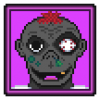Summer 2022 Art Chalenge - Platformer
Summer 2022 Art Chalenge - Platformer

Welcome to the summer 2022 art challenge. Platformer is this seasons genre.
The challenge and voting starts 1st June 2022.
Votes are tallied 1st July 2022.
Submit your entries anytime...
ANY art that hasn't already been submitted to OGA qualifies for the challenge!
Tag your submissions with both a "platformer" and "2022" tag to be in the running...
Post a link to your upload in this thread or in the Discord Art Challenge Submission channel:
The submission with the most favourites by 1st July 2022 wins!
Prizes include a shiny new OGA medal for participants and the winner.
![]()
![]()
Also, appear a cut above the rest on the OpenGameArt.org Discord server by gaining the following roles:
🥇 Art Boss (for the winner)
🥈 Art Contender (for all entrants)
Art used in the banner image:
https://opengameart.org/content/a-platformer-in-the-forest
https://opengameart.org/content/pixel-fonts-by-pix3m
The following is a guide on the art required to make a platformer. Good luck!
Notable subgenres include Action Platformer and Metroidvania.
2D side view perspective.
3D third-person perspective.
2D tile sets that enable the developer to create full stages and worlds.
Here is a good template covering all the angles:
https://opengameart.org/content/platformer-tileset-template
Pixel art can't be scaled on the fly... I recommend a tile size of 16x16px with sprites at 24px and above.
Stage backgrounds Preferably at a 16:9 aspect ratio to fit well on modern screens.
If possible, layer the backgrounds for a parallax scrolling effect.
A good resolution for pixel art backgrounds is 384 x 216. This fits the 1080p resolution perfectly when scaled up 5x.
Special tiles
Breakable blocks
Power-up blocks
Hazards (water/lava, etc., spikes, traps).
Ladders or ropes
Objects
Background/environment objects (rocks, trees, fencing, etc.).
Interactable objects (crates, switches, buttons, save-points, spring boards/trampolines).
Collectables (coins, 1Ups, power-ups).
Player character
Core animations: Idle, Running, Jumping.
Secondary animations: Attacking (Shoot/Stomp/Punch), Climbing (Ladders), Pushing (Blocks), Death, Hurt, Walking, Dash, Slide (Wall/Ground).
Enemy types
Shooter (Standing/Crouching).
Core animations: Fire/Shoot (plus an accompanying projectile), Aim/Tell (this warns the player before the shot).
Secondary animations: Hurt/Hit, Dead, Ready/Idle.
Jumper (Jumping towards the player).
Core animations: jump or bounce forward.
Secondary animations: Hurt/hit (this could be stun), Dead.
Static Jumper (Jump up and down on the spot. Could also be fire shooting up from a lava pit).
Core animations: jump.
Secondary animations: Moving (in-motion idle loop like a projectile), Hurt/hit (this could be a stun), Dead.
Patrolling (walking back and forth atop a platform)
Core animations: walk/run.
Secondary animations: Hurt/hit (this could be stun), Dead, Pause/Idle.
Caterpillar (moves up and over/under different platforms, sticking to the surface).
Core animations: Moving forward.
Secondary animations: Hurt/hit (this could be a stun), Dead, Pause/Idle.
Flying
Core animations: flying (duh).
Secondary animations: Hurt/hit (this could be stun), Dead, Attack (Swoop/Shoot/Drop bombs).
Angry (charge when they see the player).
Core animations: Walk, Run (charge), Shocked (alert to the player).
Secondary animations: Hurt/hit (this could be stun), Dead, Pause/Idle/Sleep.
Concept art
Cutscenes
Faux box/cartridge art.
Press kit (hi-res backgrounds, logos, cinematic screenshots, banner images).
For Itch.io game page images, check out this size guide:
https://starwest.itch.io/itch-page-image-templates
Music
It can be any style or genre, e.g., orchestral, electronic, chiptune, etc. Mood is important.
Type 1 main menus, levels, or credits scenes are rollicking, cheerful, fun, sweet, and amiable or good-natured.
Type 2 main menus, levels, or credits scenes are passionate, rousing, self-assured, boisterous, or rowdy.
Type 3 main menus, levels, or credits scenes are amusing, silly, campy, quirky, whimsical, witty, or wry.
Game Over is literate, poignant, wistful, bittersweet, autumnal, or brooding.
Boss fights or cavern stages are aggressive, fiery, tense, anxious, intense, volatile, visceral.
SFX
Should fit the sprites' animations, power-ups, special effects and game objects.
Also, menu select, e.g., button pushes, navigation.
Prime examples of the genre for inspiration:
Super Mario World
Shovel Knight
Celeste
Mega Man 2
Super Ghouls and Ghosts
Sonic the Hedgehog
Braid
Super Castlevania IV
Super Metroid
Super Mario 64


The Final Mega Boss!
See this link for a list of the entries so far: Platformer, 2022
--Medicine Stormhttps://opengameart.org/content/helgi-legend-of-the-viking-0
Overcome - by ATMANAN
https://opengameart.org/content/overcome-by-atmanan
ATMANAN
Together One Last Time - by ATMANAN
https://opengameart.org/content/together-one-last-time-by-atmanan
ATMANAN
A Place I Call Home
Tsorthan Grove
Hobbyist Musician
it looks like Together One Last time by Ataman is the winner.
Congrats, ATMANAN!
Congratulations ATMANAN. Clearly I need to up my game :D
Tsorthan Grove
Hobbyist Musician
Thank you thank you!
ATMANAN
Nice work ATMANAN! Well done!
All medals awarded! Front page announcement updated!
--Medicine StormDoe's this include discord as well? i.e. Art Contender?
Tsorthan Grove
Hobbyist Musician
Yes. I'll add the roles soon! Anyone who has a different username on Discord will have to pm me...
My apologys if that can across impaintent as that was not my intent.
Thanks for clarifying.
Tsorthan Grove
Hobbyist Musician
Who won this challenge?
ATMANAN
--Medicine Storm